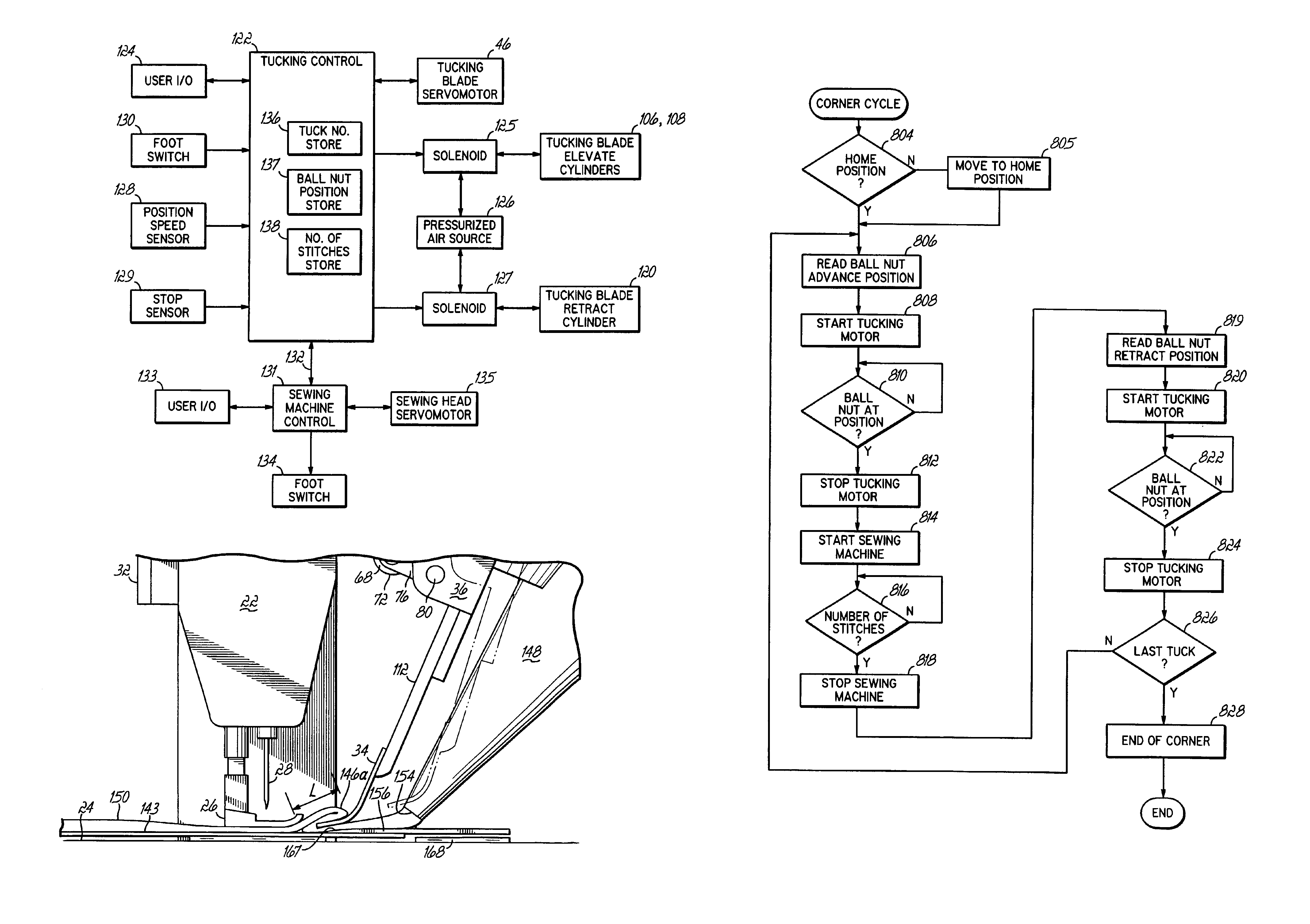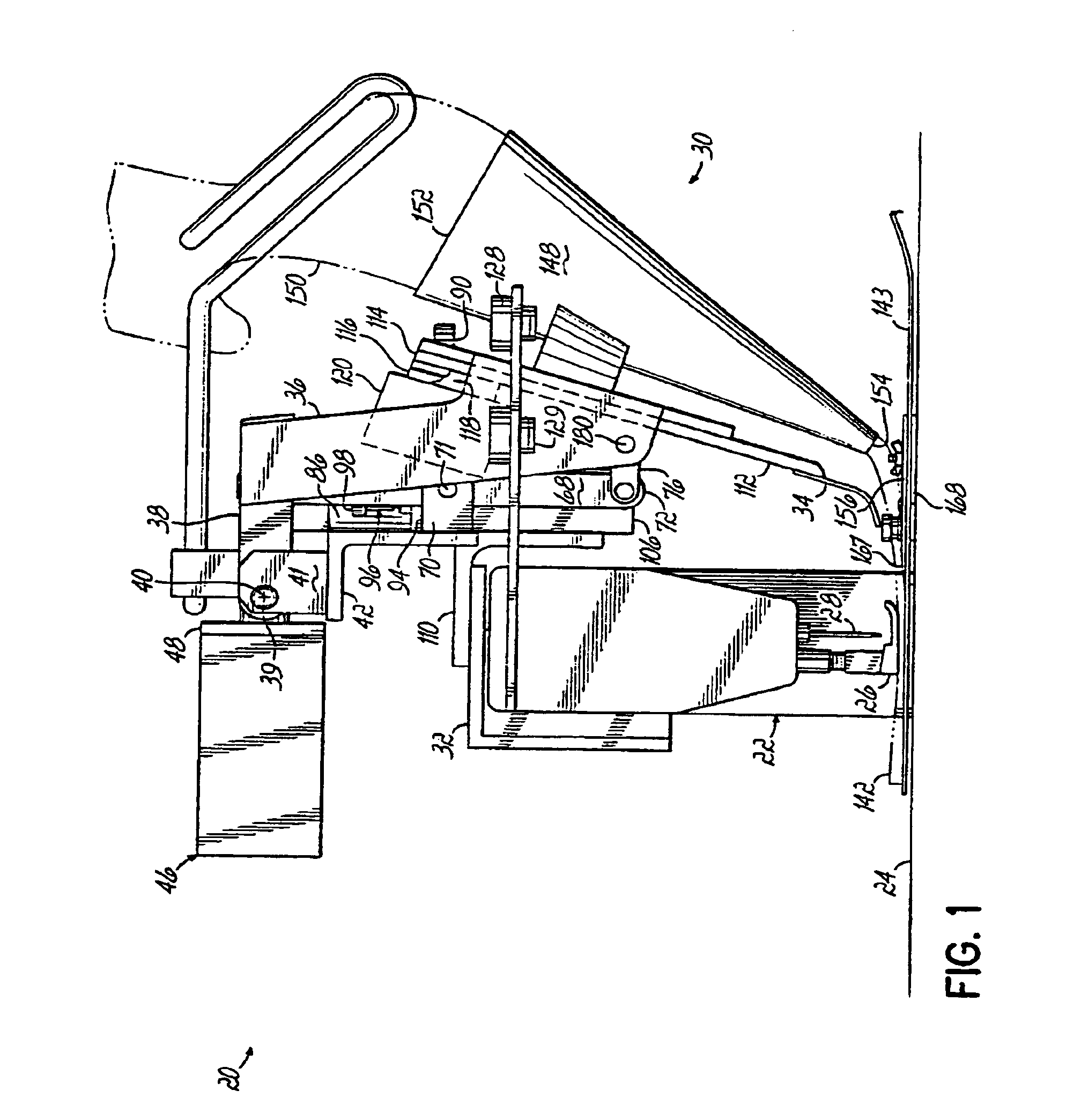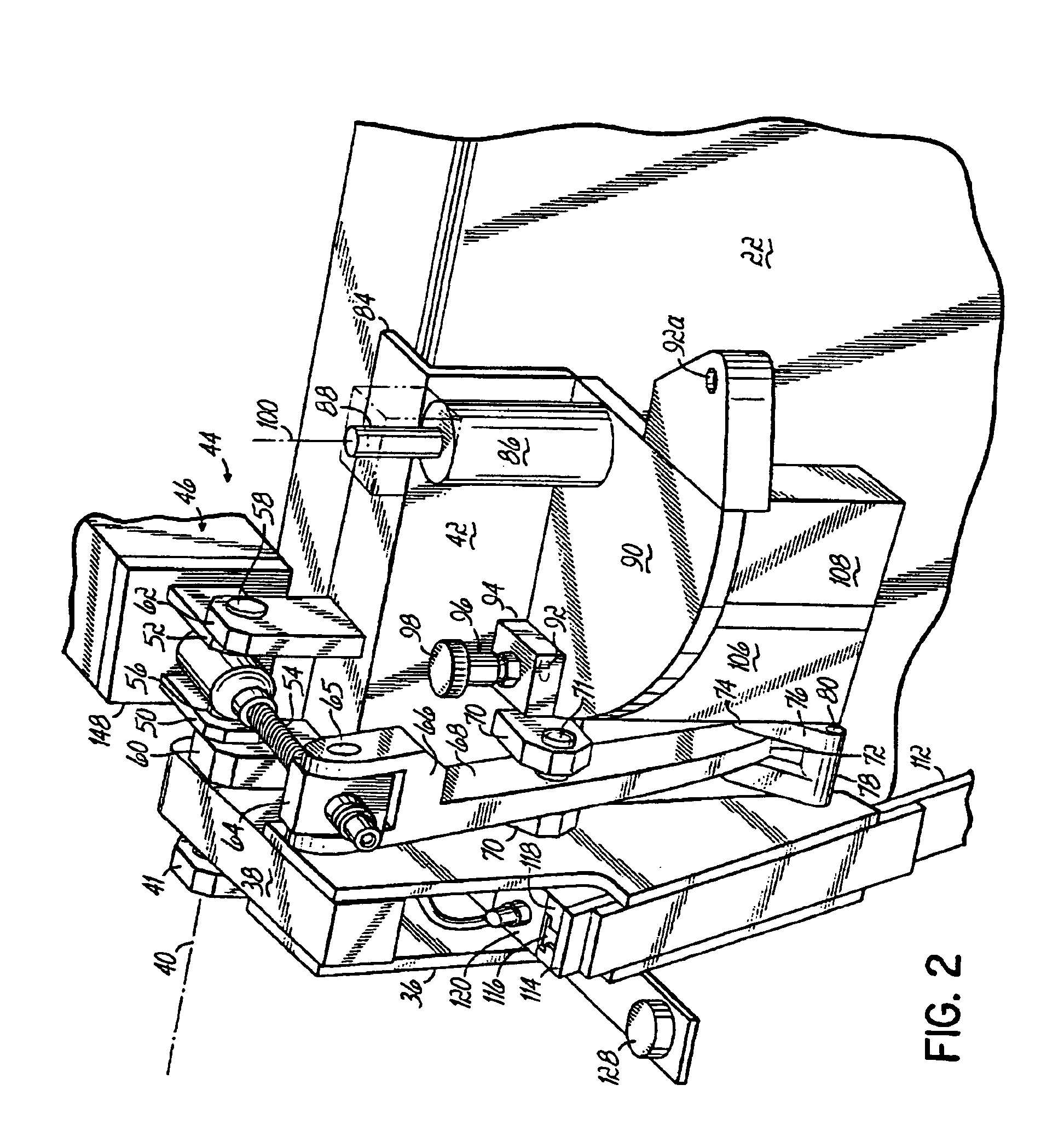Programmable tucking attachment for a sewing machine and method
- Summary
- Abstract
- Description
- Claims
- Application Information
AI Technical Summary
Benefits of technology
Problems solved by technology
Method used
Image
Examples
Embodiment Construction
[0026]Referring to FIG. 1, a sewing system 20 has a sewing machine 22 mounted in a base plate 24 in a known manner. The sewing machine includes a presser foot 26 and a needle 28 that is reciprocated and carries a needle thread and a bobbin thread in a known manner. The sewing machine 22 is a commercial sewing machine that performs lock stitching. Lock stitching is a known technique of interlacing a needle thread and bobbin thread, which will not be further described here. A tucking attachment 30 is mounted on the sewing machine by means of mounting brackets 32, 110. The tucking attachment 30 of FIG. 1 includes a tucking blade 34 that is mounted in a tucking arm 36. The tucking arm 36 has an upper end 38 pivotally mounted to a pivot pin or trunnion 39 that is supported between a pair of opposed bearing blocks 41, 60 (FIG. 2) that are mounted on a support bracket 42.
[0027]A tucking blade drive 44 is also mounted to the support bracket 42 and is operative to provide a pivoting motion t...
PUM
 Login to View More
Login to View More Abstract
Description
Claims
Application Information
 Login to View More
Login to View More - R&D
- Intellectual Property
- Life Sciences
- Materials
- Tech Scout
- Unparalleled Data Quality
- Higher Quality Content
- 60% Fewer Hallucinations
Browse by: Latest US Patents, China's latest patents, Technical Efficacy Thesaurus, Application Domain, Technology Topic, Popular Technical Reports.
© 2025 PatSnap. All rights reserved.Legal|Privacy policy|Modern Slavery Act Transparency Statement|Sitemap|About US| Contact US: help@patsnap.com



